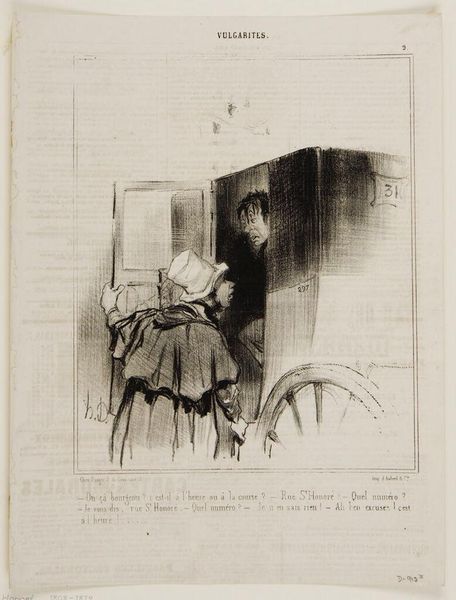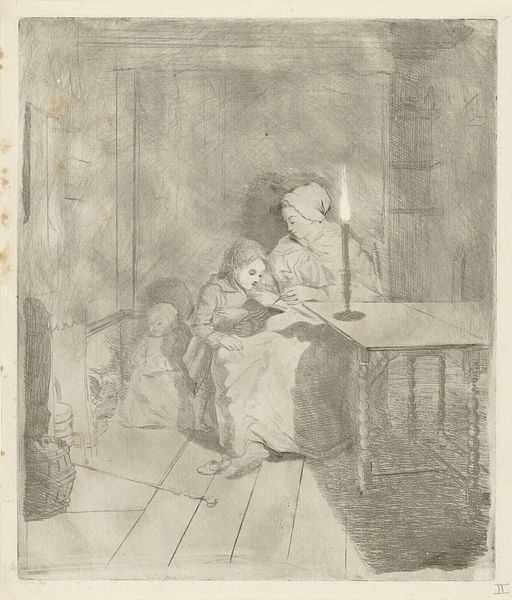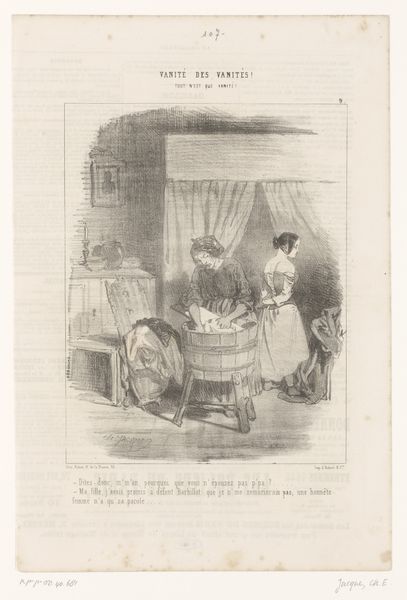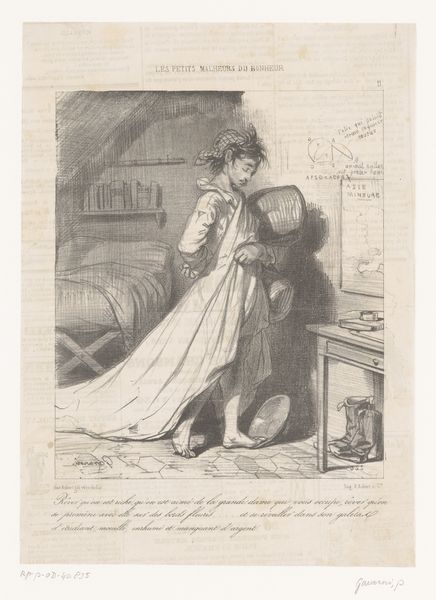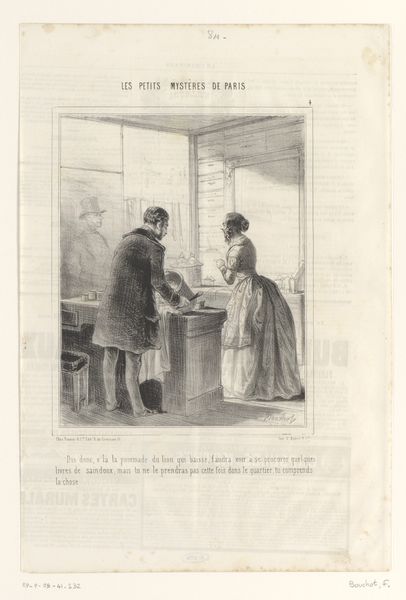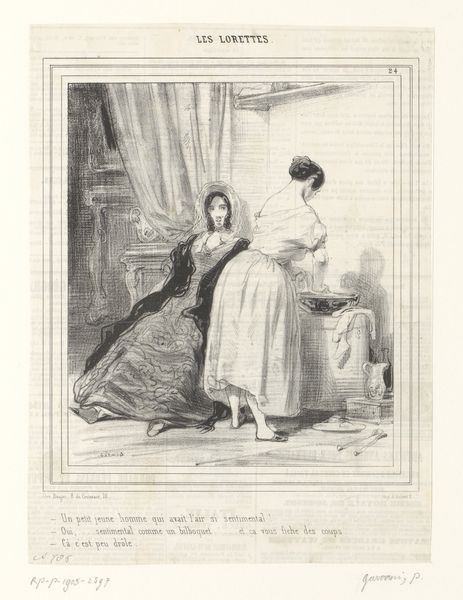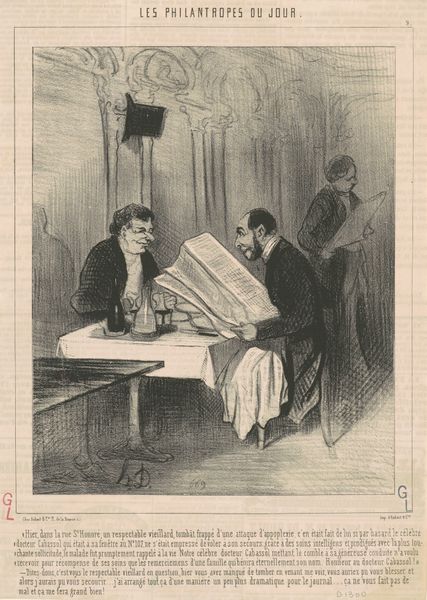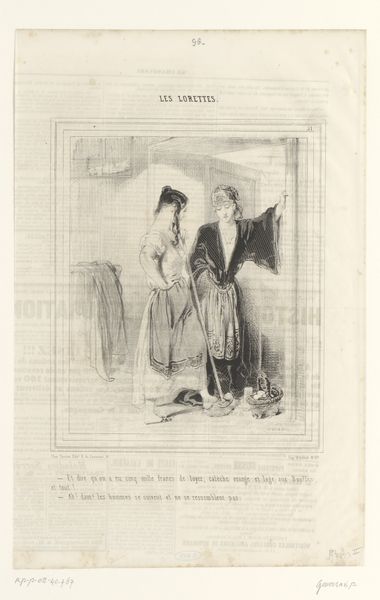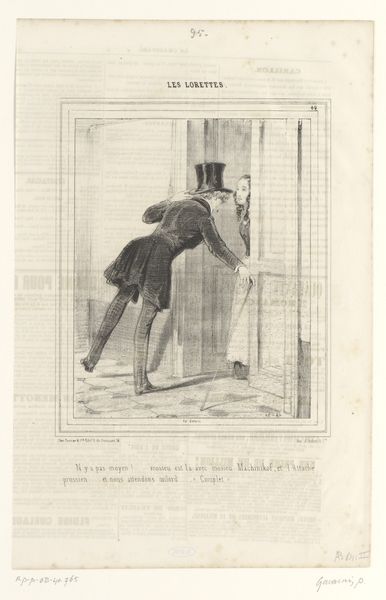
lithograph, print
#
lithograph
# print
#
caricature
#
social-realism
#
romanticism
#
genre-painting
Copyright: National Gallery of Art: CC0 1.0
Editor: This is a lithograph by Honoré Daumier, titled "O\u00f9 \u00e7a bourgeois? C'est-il a l'heure ou ...", created around the 19th century. The scene feels like a quick snapshot, a commentary on social class perhaps. The coachman’s face, peering out from the darkness, is really striking. What do you see in this piece? Curator: It’s interesting you're drawn to the coachman's face. Daumier was a master of using visual shorthand. The shadowy rendering of the coachman evokes a sense of anonymity and perhaps the social invisibility of the working class. Consider the text included with the image. Note how language is used to further highlight social standing through comedic irony. Do you think the “bourgeois,” being asked where he's going, truly doesn't know his destination, or is this ignorance feigned? Editor: I hadn't thought of it that way. It’s as if the coachman represents the forgotten, while the bourgeois is caught in their own little world. The “vulgairites” title might also hint at commentary on everyday life and societal observations. It makes me consider that each element – shadow, word, carriage, costume – could act like symbols in a grand statement of social observation. Curator: Precisely. Daumier isn’t just presenting a scene; he’s using recognizable characters and situations as symbolic representations of broader social tensions. Caricature is often a mirror reflecting anxieties of class, money, power, gender, and what society deems "vulgar." How has our brief dialogue influenced your interpretation of this artwork, if at all? Editor: I appreciate how much cultural and social insight is layered into one scene, things that would have been hard to interpret on my own without considering how the symbolic image relates to cultural memory and identity. Curator: Indeed. And those cultural memories shape our modern understanding of it.
Comments
No comments
Be the first to comment and join the conversation on the ultimate creative platform.
